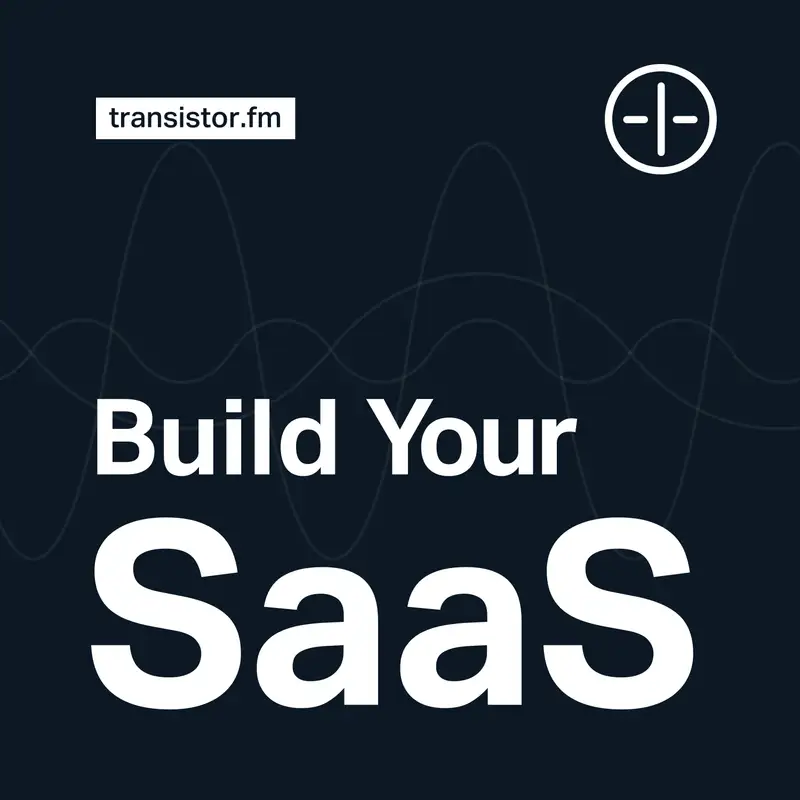In 2013, I interviewed Jason Calacanis, the angel investor.
One of the things I asked him: "Why do venture capital investors take these big risks with their money?"
One of the things I asked him: "Why do venture capital investors take these big risks with their money?"
"There's a lot of money in the world. There are trillions of dollars just sitting around, and people are bored. The money is bored! Money wants to burn! Money does not want to sit in a safe."
Uh. What an interesting idea: "the money is bored."
Jon Buda and I are bootstrapping Transistor.fm and Spots.fm. We've invested our own money into both of these projects.
When you're self-funding a startup, your money is the opposite of bored. Your money is stressed. You're caught between these two realities: you're investing real time and money into the product, but the product isn't yet giving you anything back.
For example, we're launching Transistor.fm on August 1st.
Right now we have 51 early access customers and $781 in MRR.
Let's say that when we launch on August 1st, we double MRR to $1,500.
To get to $21,000 in MRR (enough for Jon and me to focus on Transistor full-time), it will take five years (assuming 10.0% exponential growth and 5.0% churn).
Five years. 60 months. That's a long time to wait for a paycheque.
There's this tricky tension when you're bootstrapping a SaaS. On one side, you're investing in this product that could be an incredible asset.
If Transistor hits $20,000 a month, that's dependable, recurring revenue.
But on the hand, investing all that time and money in something that isn't a sure bet is a risk.
It's easy to see why bootstrapped founders get stressed. It's easy to see why many experience burnout and have to quit.
That's something Mike and Fred talked about on their podcast, Hit Reply.
Bootstrappers who are building something new have to walk this fine line:
- We need to invest a considerable amount of effort to launch our product.
- But we also need money to live, and it can be years before a SaaS can support you full-time.
Which has me thinking about Basecamp.
What Jason Fried and DHH achieved with Basecamp is what most bootstrappers aspire for. Heck, most of us would be happy for even a fraction of their success.
They've long been the example of how you can self-fund a product, bring it to market, grow it, and have it succeed.
But the story many of us are telling ourselves about how they achieved that success isn't quite right.
Yes, they've bootstrapped Basecamp since 2004.
But in 2006 they didn't something a lot of us bootstrappers haven't paid a lot of attention to.
They took investment!
I recently read this interview with DHH on Startup.co. The interviewer asked:
What Jason Fried and DHH achieved with Basecamp is what most bootstrappers aspire for. Heck, most of us would be happy for even a fraction of their success.
They've long been the example of how you can self-fund a product, bring it to market, grow it, and have it succeed.
But the story many of us are telling ourselves about how they achieved that success isn't quite right.
Yes, they've bootstrapped Basecamp since 2004.
But in 2006 they didn't something a lot of us bootstrappers haven't paid a lot of attention to.
They took investment!
I recently read this interview with DHH on Startup.co. The interviewer asked:
"As you’ve built Basecamp you’ve been very vocal about resisting the temptation of unicorn culture. How have your perspectives changed?"
David's answer is interesting:
It wasn’t without temptation or struggle to stay like this. Especially in the early years, before our bombastic views on venture capital, the IPO rat-race, and other ills of funding were known. We had, I think, close to 50 different VCs get in contact.
Ironically, part of what did give us the confidence to turn down that whole world was a small sale of equity to Jeff Bezos. That gave our personal bank accounts just enough ballast that the big numbers touted by VCs and acquisition hunters lost their lure.
This is something the bootstrapping culture doesn't think about a lot.
37signals, the poster child of the bootstrapped world, took investment two years after they launched the product.
That Bezos money didn't go into the company. It went into their personal bank accounts.
Jason and David were able to hedge their bets. That Bezos investment removed a lot of the stress and risk that comes from bootstrapping a product.
Bootstrappers have created a religion out of building something from scratch and self-funding the entire thing.
But what if that ideology leads to burnout? Or bankruptcy? Or not being able to go the distance?
Here's David again:
"I really wish that more founders who are on to something could find ways to diversify their accounts just enough to dare go the distance."
It's something we need to think about.
What do you think?
- Leave a comment on Breaker, the podcast app for Android and iPhone.
- Leave a comment on CastBox, the podcast app for Android and iPhone.
- Otherwise, get us on Twitter: @transistorfm or email us: mail@transistor.fm
- Want to get notified when we launch? Sign up at transistor.fm
Show notes:
- Product People, 33, with Jason Calacanis
- Forecast your MRR (a tool by Baremetrics)
- Hit Reply, ep 3, with Fred and Mike
- Foundation podcast, 26, Jason Fried interview
- Startup.co interview with DHH
★ Please review us in iTunes – it helps other folks find the show!
Thanks to our monthly supporters
- Rewardful.com
- Greg Park
- Mitchell Davis from sixsides.co
- Marcel Fahle, wearebold.af
- Bill Condo (@mavrck)
- Ward from MemberSpace.com
- Evandro Sasse
- Austin Loveless
- Michael Sitver
- Colin Gray
- Dave Giunta
★ Support this podcast on Patreon ★
